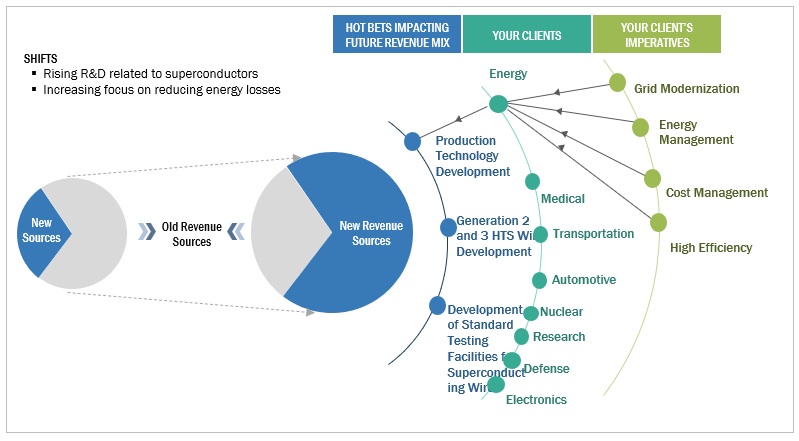Superconducting Wire Market Size, Share and Industry Analysis
The global superconducting wire market is projected to reach USD 1.7 billion by 2028 from an estimated USD 1.1 billion in 2023, at a CAGR of 9.2% during the forecast period. Factors such as increased research and development (R&D) in medical and transportation sectors, and increasing research investments for superconducting wires are driving the growth of the superconducting wires market.
Key Market Players:
The superconducting wires market is served by a mix of large international players with operational presence across the globe and local players commanding a strong supply network in the domestic market. The leading players in the global superconducting wires market include Sumitomo Electric Industries, Ltd. (Japan), Fujikura Ltd. (Japan), Furukawa Electric Co., Ltd. (Japan), Bruker (US), and American Superconductor (US). Strategies such as product launches, contracts, agreements, partnerships, collaborations, alliances, acquisitions, and expansions are followed by these companies to increase their market share.
Download PDF Brochure – https://www.marketsandmarkets.com/pdfdownloadNew.asp?id=226116096

Known Adjacencies:
- Energy Sector Integration: Superconducting wires have applications in energy transmission and storage, such as power cables and magnets for energy storage systems.
- Medical imaging (MRI) devices rely heavily on superconducting wire-based magnets.
- Superconducting wires are utilized in many scientific instruments, including particle accelerators and nuclear magnetic resonance (NMR) spectrometers.
- High-Performance Computing: Superconducting wire-based systems may be used for quantum computing and other high-performance computing applications.
- Superconducting wires can be used in magnetic levitation (maglev) trains and other transportation systems to improve efficiency and speed.
Challenges
The superconducting wire market faces numerous hurdles that impede its widespread use. High production costs, limited operational temperature ranges necessitating expensive cryogenic systems, and material instability are key impediments. Furthermore, fabrication complications and scale-up challenges restrict mass production, and incorporating superconducting wires into existing infrastructure necessitates significant investments and modifications. Furthermore, competition from traditional technology, regulatory constraints, and a lack of public awareness compound these issues. Addressing these challenges requires joint efforts to advance technology, lower prices, and improve reliability, ultimately unlocking the full potential of superconducting wires in a variety of applications.
This report segments the superconducting wire market based on sales channel into two segments: direct, and indirect. Direct segment is expected to be the largest segment during the forecast period. As superconducting wire market is very niche market, most companies prefer a direct-to-consumer approach, which is expected to be the driving force for direct sales of superconducting wires.
Request Sample Pages @ https://www.marketsandmarkets.com/requestsampleNew.asp?id=226116096
Asia Pacific is expected to be the fastest-growing superconducting wire market during the forecast period. The increasing spending on energy and transportation infrastructure development in countries such as China, Japan, and South Korea is fueling the growth of the Asia Pacific superconducting wire market.

